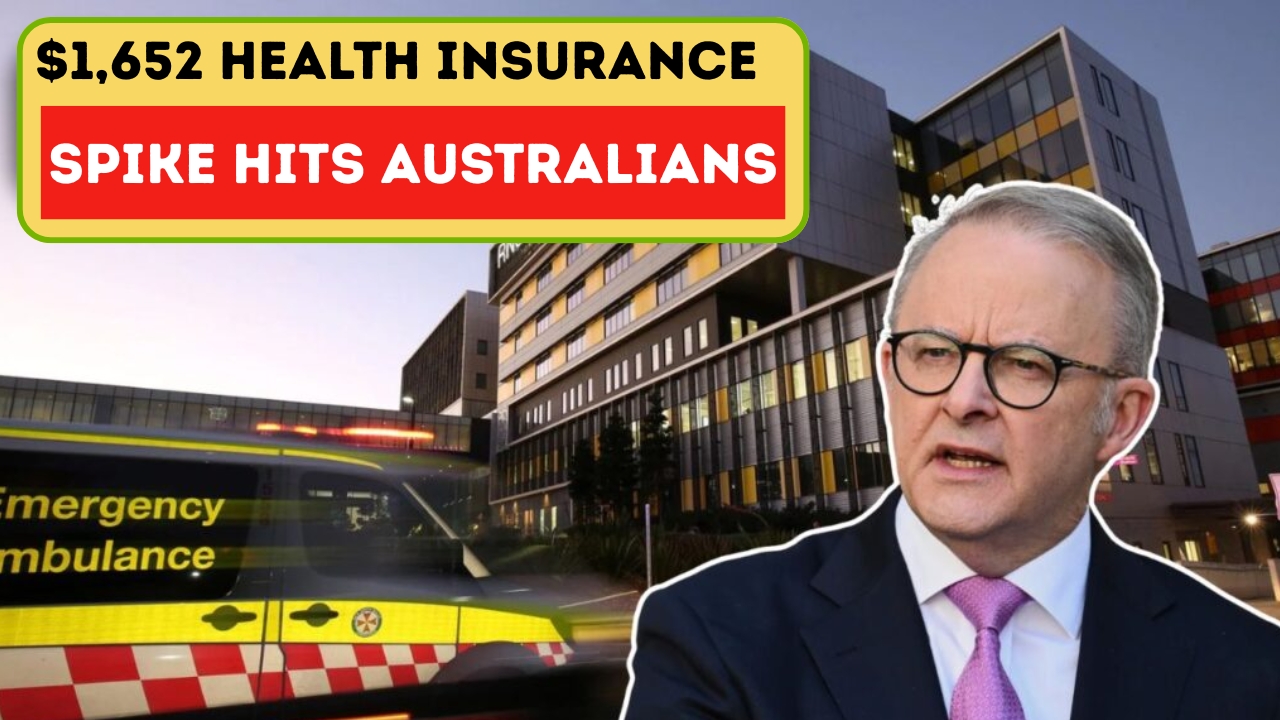You might have recently come across headlines stating that health insurance premiums in Australia will jump by $1,652 in 2025. That’s a big-number that grabs attention. But to be frank, the reality is a bit more nuanced. Let me walk you through what really seems to be happening, why it’s happening, and what it could mean (yes, for your wallet).
The Reality Behind the “$1,652” Figure
First up: I couldn’t find credible evidence from mainstream sources that all Australians will see a $1,652 increase in health insurance premiums. What I did find is that private health insurance premiums are slated to rise on average by 3.73% from 1 April 2025.
Now, 3.73% might not sound like much — but if your current premium is already high, that percentage can translate into several hundred dollars extra per year (or more, depending on your cover level). For people with extensive coverage or for families, that extra could get closer to high sums. Some insurers (especially those with more expensive policies) may push increases even higher than the average.
So, when someone mentions a $1,652 jump, they might be citing a worst-case scenario or a particular high-tier plan over multiple years (or misrepresenting cumulative increases). But as of now, the official, approved “average” is 3.73%.
Why the Increase? What’s Driving It
You may well ask: “Why do health insurance premiums keep going up?” Here are the main thrusts:
- Rising healthcare costs. Medical technologies, new devices, specialty procedures — they’re always getting more complex and expensive.
- Wages and staffing pressures. Hospitals, clinics, staff (nurses, doctors, allied health) demand higher pay (especially with inflation).
- Increased utilization. More people are using services — more tests, more procedures, more claims.
- Inflation on supplies. Pharmaceuticals, diagnostic tools, hospital consumables, repair/maintenance — all of these face inflation too.
- Regulatory and approval process. Insurers must submit proposed increases to the federal Minister/Department of Health, and that tends to constrain how much they can hike.
- Government rebates & adjustment factors. The health insurance rebate (a government contribution) is also adjusted each year, but not always in step with premium increases.
Interestingly, the government intervened in 2025 to push insurers to “sharpen their pencils”—the Minister for Health, Mark Butler, asked insurers to revise their proposed hikes downward before final approval. So, the final average (3.73%) is a constrained number, not necessarily the raw ask from insurers.
Who’s Getting Hit Hardest — Variations by Fund & Policy
Here’s where the average can mislead you. Different insurers and different levels of cover will see different increases. Some go above 3.73%, some stay below.
For example:
- nib announced a hike of 5.79% for its plans.
- Some insurers (like Police Health Limited) are slated to raise premiums by as much as 9.56%.
- On the other hand, Health Insurance Fund of Australia (HIF) is reportedly increasing by a more modest 1.91%.
So, if your insurer is aggressive or your policy is high-end, your “share” of the premium jump could approach or surpass what some headlines claim ($1,652 over a few years, etc.).
Let me put this into a table, so it’s clearer:
| Insurer / Fund | Average Increase in 2025* | Notes / Observations |
|---|---|---|
| nib | 5.79% | One of the steeper increases. |
| HCF | ~4.95% | Above average. |
| Bupa | ~5.10% | Higher than average. |
| Health Insurance Fund of Australia (HIF) | ~1.91% | On the lower end. |
| Police Health Limited | ~9.56% | Among the most extreme increases. |
| Industry Average | 3.73% | Officially approved average. |
* Based on “average annual price changes in private health insurance premiums” and insurer announcements as of early 2025.
To be fair, those percentage increases are just part of the story. Depending on how much your starting premium is, that 5% or 9% could be hundreds or even over a thousand dollars extra per year (for costly plans or families).
The Impact — On You, on Families, on the System
So — what does it mean for you and for Australians in general? Here are some possible impacts (and a few caveats).
- Higher household burden
Many Australians already feel the squeeze from inflation, housing costs, energy bills, etc. A steeper health insurance bill may push some families to cut back other essentials or drop certain cover levels. - Choices & trade-offs
People might downgrade from Gold to Silver, drop “extras,” or switch insurers entirely. That includes reducing coverage for dental, physio, optical, or limiting hospital cover.
On the flip side, some might think “Do I even maintain private coverage?” — though that carries risks (waiting periods, out-of-pocket costs, public hospital queues, etc.). - Switching & churn increases
With more disparity in increases across insurers, churn might rise (people moving to lower-cost providers). That can disrupt continuity of care or introduce administrative hassle. - Pressure on public system
If a significant slice of people drop private coverage, demand for public (Medicare / public hospitals) could increase, putting strain on waitlists, budgets, infrastructure. - Equity concerns
Higher income people may absorb the increase more easily. Lower-income households may be hit harder, especially if they have chronic conditions or require frequent medical services. - Political & public backlash
Health is a politically sensitive domain. Price hikes, especially perceived as excessive, can draw criticism, and governments may be pressured to intervene more aggressively in regulation or subsidy.
What You Can Do (Yes, You Can Be Proactive)
Rather than passively accept the hike, here are some steps you might take:
- Review your policy: Are you paying for extras you don’t use? Could a lower tier suffice (without exposing yourself to risk)?
- Compare across funds: Because increases vary, switching might give you a better deal.
- Prepay (if allowed): Some funds allow you to prepay your policy before the rate increase (before 1 April) to “lock in” the current rate for a time.
- Bundle or negotiate: Some insurers offer discounts or incentives for features like direct debit or switching.
- Advocate/raise voice: Stay aware of government regulation, public pressure, consumer watchdogs. Sometimes, public push forces more restraint in future years.
Why the $1,652 Figure Persists
You might still wonder: Where does that dramatic “$1,652” figure come from? Here are some hypotheses:
- It might refer to cumulative increases over several years (e.g. compounding annual hikes).
- It might reflect a particular policy (very high coverage, large family plan) rather than a typical one.
- It might be a misquote or sensational headline to generate shock.
- It might reflect out-of-pocket increases or combined premium + rebate changes.
Bottom line: don’t accept that number blindly — always check your insurer, your cover, and how your own plan is changing.
FAQs
- Will my premium really go up by $1,652 in 2025?
Not likely — unless you have a high-cost policy and your insurer imposes a steep increase. The average approved increase is 3.73%. - Can insurers raise premiums whenever they like?
No — they must submit proposals to the Department of Health and get ministerial approval under regulations. - Does the government rebate on health insurance increase along with premiums?
Not always. The rebate adjustment factor sometimes lags behind or even reduces. - Is switching health funds to avoid a hike worthwhile?
Possibly yes — if you find a fund that increases less (or offers better value). But check waiting periods, coverage differences, etc. - If I prepay before April, can I avoid the increase?
In many cases yes — prepaying for 12 months ahead of the hike can “lock in” current rates for a while.




